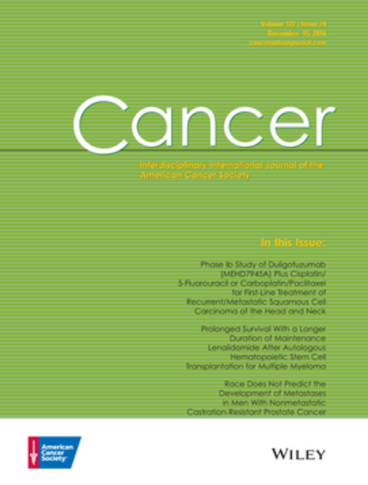Correlation analysis of invasive disease-free survival and overall survival in a real-world population of patients with HR+/HER2– early breast cancer
Abstract
Background
Overall survival (OS) is the gold standard for assessing clinical benefit in oncology but requires extended follow-up to detect sufficient events. Invasive disease-free survival (iDFS) requires shorter follow-up times and is considered an objective and clinically meaningful end point in early breast cancer (EBC) trials. The authors assessed iDFS as a surrogate end point for OS in adjuvant HR+/HER2– EBC using real-world patient-level data.
Methods
A retrospective analysis was conducted on patient data from the ConcertAI Patient360 database (January 1995–April 2021). Key inclusion criteria: age ≥18 years, stage II or III (AJCC 8th Edition) HR+/HER2– EBC, prior surgery, adjuvant endocrine therapy (ET). Spearman ρ, iterative multiple imputation ρ (IMI; 0.8–1 considered “very strong”), and R2 (clinical relevance R2 ≥ 0.70) were used to assess iDFS–OS relationship. Subgroup analyses included ET (nonsteroidal aromatase inhibitor or tamoxifen), stage, menopausal status, nodal status, prior (neo)adjuvant chemotherapy, and prior radiotherapy.
Results
A total of 3133 patients were included (1103 [35.2%] iDFS events; 554 [17.7%] OS events); mean age was 58.4 years, 98.8% were female, 29.9% were premenopausal, and 80.9% had stage II disease. Median follow-up time was 55.1 months. iDFS and OS exhibited a positive, very strong, clinically relevant correlation (Spearman ρ: 0.88 [0.87–0.89]; IMI ρ: 0.83 [0.79–0.86]; both p < .0001). iDFS accounted for 82% of variation in OS (R2 = 0.82). Results of all subgroup analyses were consistent with overall population.
Conclusions
This patient-level real-world analysis demonstrated very strong, positive correlations between iDFS and OS, supporting the use of iDFS as a reliable primary end point in adjuvant HR+/HER2– EBC.


 求助内容:
求助内容: 应助结果提醒方式:
应助结果提醒方式:


